Key takeaways:
- Workforce development creates a sustainable ecosystem that empowers individuals and communities, offering job training, mentorship, and ongoing support.
- In post-conflict recovery, workforce development fosters social cohesion, economic stability, and personal empowerment, essential for rebuilding fractured communities.
- Effective programs emphasize community involvement, tailored support services, and sustainability through ongoing skill development.
- Challenges include resource scarcity, psychological impacts of conflict, and the need for alignment between training programs and job market demands.
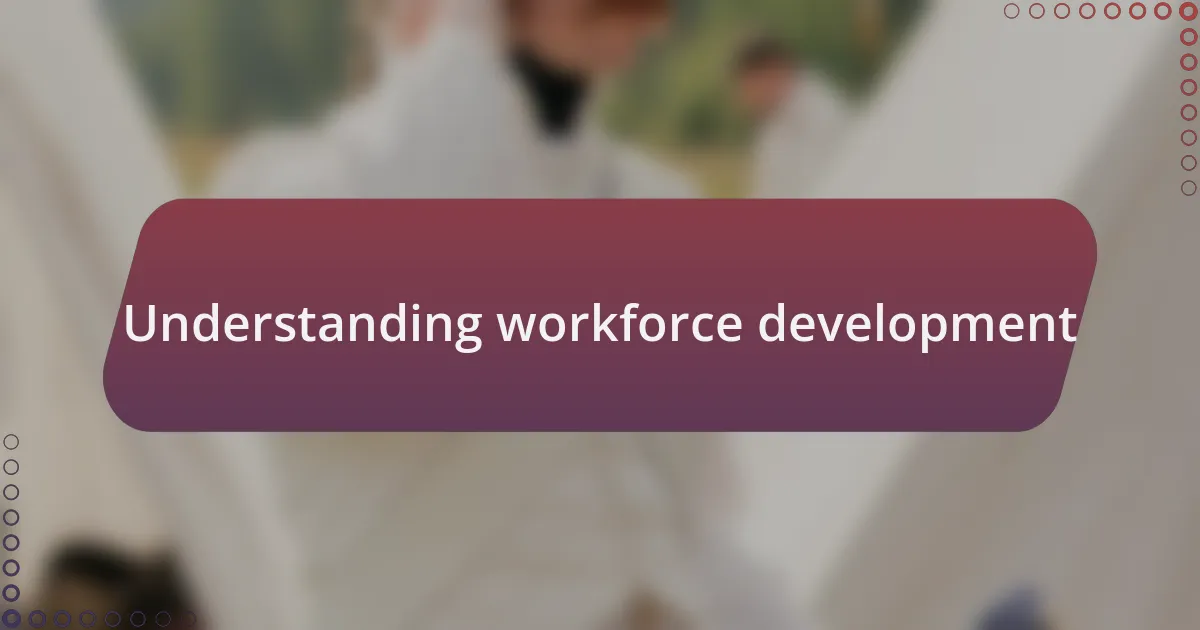
Understanding workforce development
Workforce development is more than just training individuals for jobs; it’s about creating a sustainable ecosystem that empowers people to thrive. I remember attending a workshop where participants shared their stories of resilience and transformation. Hearing firsthand how job training programs helped them regain confidence and financial stability truly highlighted the profound impact of workforce development on individuals and communities.
When I think about workforce development, I often wonder: what does it really mean for someone who has just emerged from a conflict-affected situation? In my experiences, I’ve seen that beyond skills training, it offers hope and a sense of purpose. One participant shared how landing a job not only provided her with income but also allowed her to contribute to her family and community, illustrating the dual benefit of economic stability and personal empowerment.
In many cases, workforce development initiatives focus on more than just job placement; they include mentorship and ongoing support. I recall a specific project where community leaders paired experienced mentors with newcomers to the workforce. This connection was transformational, fostering not only career growth but also a network of support that made individuals feel less isolated in their journeys.

Importance in post-conflict recovery
Workforce development plays a critical role in post-conflict recovery by reinstating a sense of normalcy for individuals and communities. I once met a former combatant who spoke passionately about how a vocational training program had not only given him skills in carpentry but also sparked a desire to rebuild his community. His story made me realize how essential these initiatives are for fostering social cohesion and encouraging a collective healing journey.
Moreover, having witnessed the transformative power of job creation firsthand, I often think about the ripple effects it generates. For instance, I’m reminded of a local bakery run by former refugees; its success not only provided jobs but also revived local economies. How can we underestimate the importance of creating opportunities where they are most needed? It’s clear to me that when people work together toward common goals, they mend the fractured social fabric left by conflict.
In my opinion, the psychological impact of employment in post-conflict contexts cannot be overstated. I recall attending a community meeting where the air buzzed with a newfound optimism as individuals discussed their new jobs and shared dreams for the future. It made me reflect on how, in the aftermath of loss, having a purpose can illuminate paths forward, fostering resilience and hope. The connection between work and wellness in these situations truly exemplifies the importance of workforce development in paving the way to recovery.
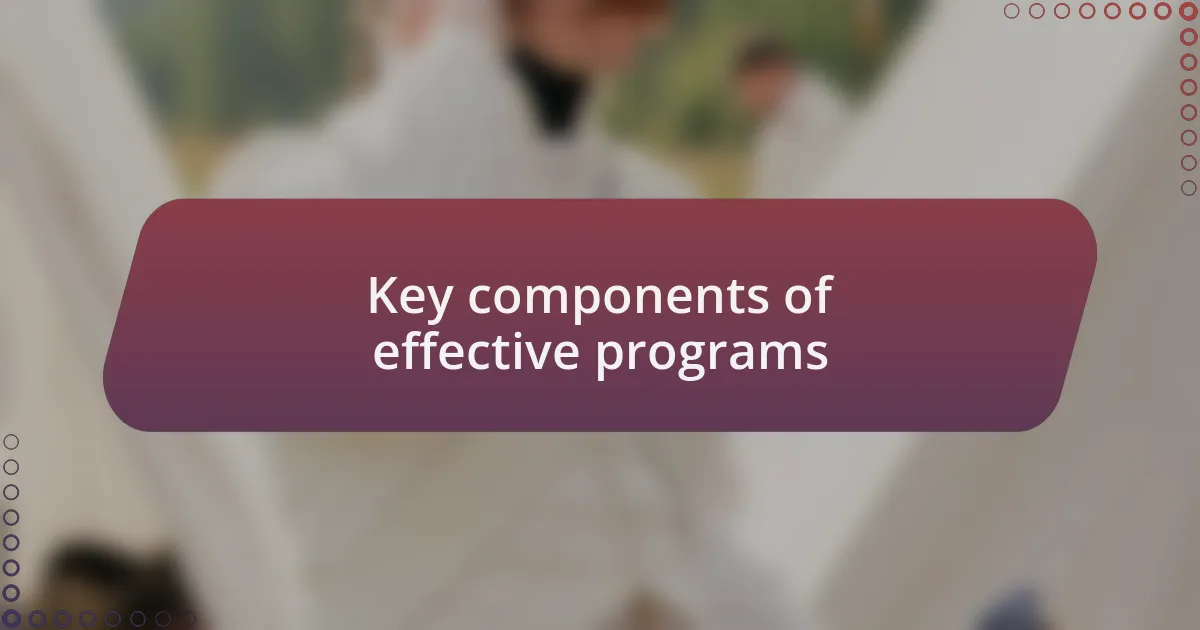
Key components of effective programs
Effective workforce development programs share several key components that contribute significantly to their success. One vital aspect is the emphasis on community involvement during the program’s planning and execution. I remember a program where community leaders were consulted, and their input directly shaped the training curricula. This created a sense of ownership among the participants; they felt heard and valued, which fostered greater commitment and motivation to succeed. Isn’t it fascinating how collaboration can lead to more effective solutions?
Additionally, tailored support services, such as counseling and mentoring, are crucial in addressing the unique challenges faced by individuals in post-conflict settings. For instance, I once facilitated a workshop where participants had the chance to connect with personal mentors who had successfully navigated similar paths. The transformation I witnessed was remarkable; individuals became more confident and began to envision brighter futures. What if we all had someone to guide us? This kind of support makes a significant difference in the lives of those aiming to build anew.
Finally, sustainability is paramount. Programs that incorporate ongoing skill development and career progression strategies tend to have a lasting impact. In a recent conversation with an alumnus of a workforce program, he spoke about how access to advanced training helped him secure a better position and financial stability for his family. Hearing his journey reaffirmed my belief that when we invest in continuous development, we not only uplift individuals but also strengthen entire communities. How can we expect lasting change if we don’t lay the groundwork for future growth?
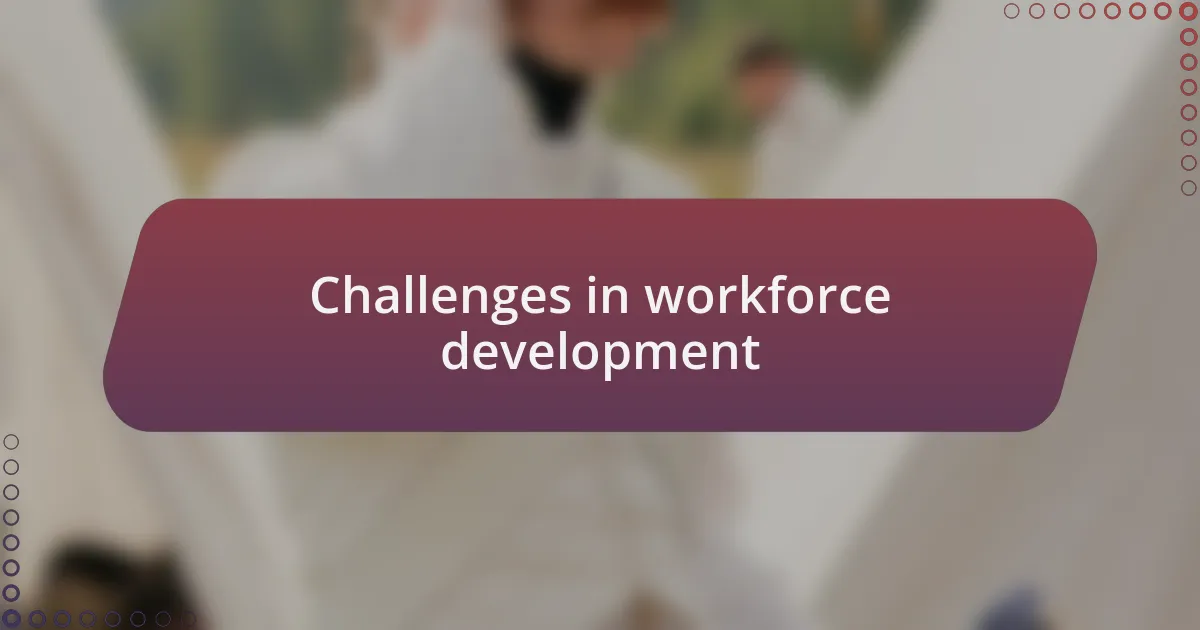
Challenges in workforce development
One major challenge in workforce development is the lack of resources available in post-conflict regions. I recall visiting a community where job training facilities were either non-existent or severely underfunded. It was disheartening to see individuals eager to learn but lacking access to the necessary technology and materials. How can we expect a workforce to thrive when the basics are missing?
Another significant hurdle is overcoming the psychological impact of conflict on individuals. In my experience, many participants carry deep-seated trauma that can hinder their ability to engage fully in training programs. I once worked with a group where several members struggled to concentrate due to anxiety and distrust stemming from their experiences. Isn’t it crucial to address these emotional barriers to create a truly supportive environment for growth?
Finally, there’s the challenge of aligning training programs with actual job market needs. Once, I was involved in a project where we taught skills that had little demand in the local economy, leading to frustration among trainees. It underscores the importance of not only developing skills but ensuring they are marketable and relevant. How can we build successful programs without this crucial alignment?
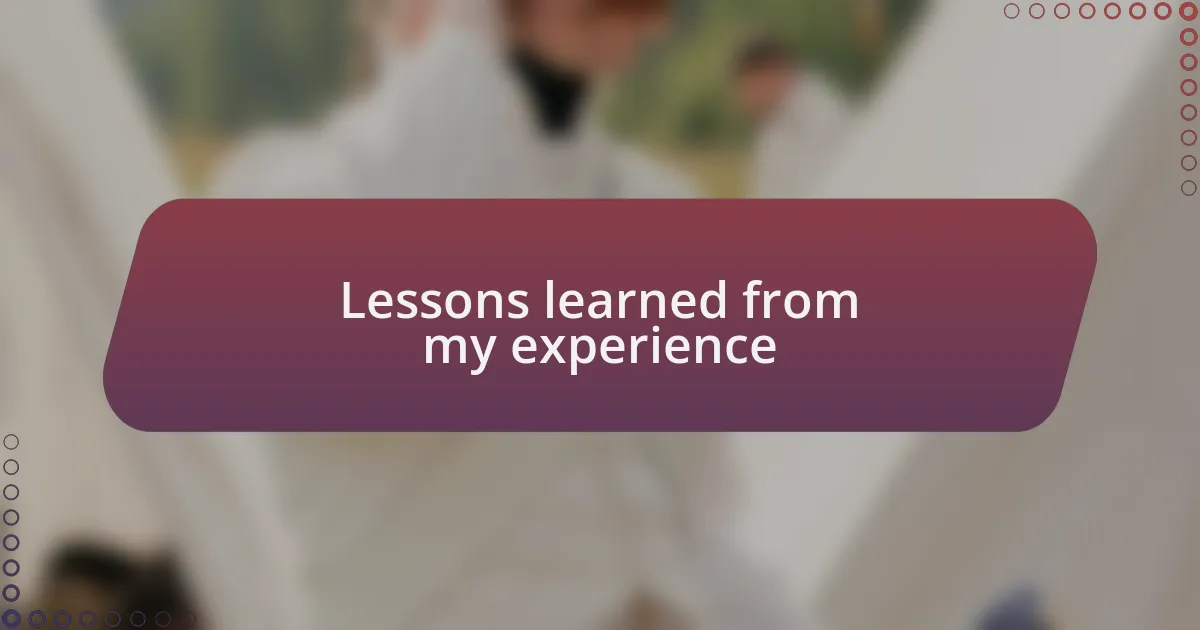
Lessons learned from my experience
In my journey through workforce development, I learned that truly listening to the community can unlock doors you never knew existed. During a workshop, I encouraged participants to voice their aspirations, and their feedback led to a shift in our program focus. It was eye-opening to realize that when we prioritize their needs and dreams, we foster a sense of ownership that makes the learning environment vibrant and motivating.
I found that building trust is just as critical as teaching skills. I remember working with a young man who was hesitant to participate due to past experiences with authority. It took time, patience, and a few shared meals for him to warm up to the idea of collaboration. Isn’t it fascinating how something as simple as a conversation can create a bridge to safety and engagement?
Moreover, I came to appreciate that flexibility in program design is essential. During one initiative, we had to pivot quickly when local industries expressed different needs than what we initially identified. Adapting our curriculum in real-time not only kept our participants relevant but also reinforced the idea that learning is an evolving journey. How often do we incorporate such adaptability in our approaches to ensure success?
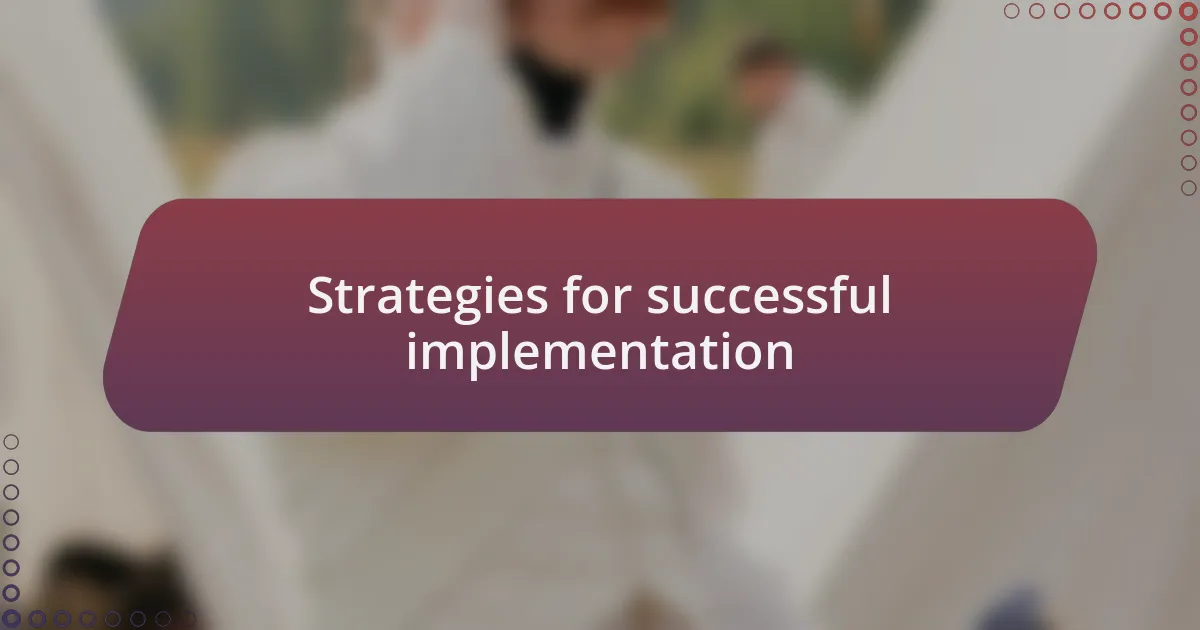
Strategies for successful implementation
When implementing workforce development programs, I discovered the power of collaboration among stakeholders. In one project, I brought together local businesses, educators, and community leaders to pool resources and share insights. The synergy created not only enhanced the curriculum but also fostered a sense of shared responsibility. How could we miss out on valuable expertise if we don’t invite diverse voices to the table?
Another strategy that proved effective was setting clear, achievable goals. During a program rollout, we focused on short-term milestones to maintain motivation and track progress. I remember the excitement on participants’ faces when they reached their first target; it felt like a collective victory. What better way to inspire continued effort than by celebrating small successes along the way?
Finally, I learned the importance of continuous feedback loops. In practice, I initiated regular check-ins with participants to adjust programs based on their evolving needs. This approach not only made them feel heard but also allowed us to fine-tune our strategies in real time. Isn’t it remarkable how open communication can transform a program from static to dynamic?